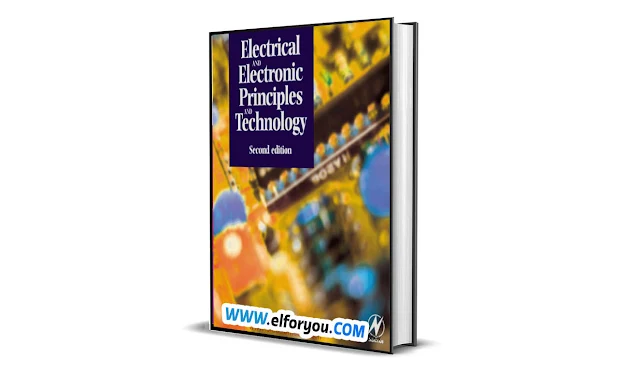Electrical and Electronic Principles and Technology Second edition PDF.
About:
In the modern world where everything is based on technology, understanding of electric circuits’ principles is vital. The second edition of “Electrical and Electric Technology” is one of the essential resources that provide a detailed knowledge of electrical and electronic concepts. The book guides readers toward a fun exploration of the electric and electronic principles.
Introduction to the Book:
Electrical and electronic principles are presented first in the book’s initial pages, showing their relevance across many domains of public life. This work investigates the historical aspects of technology and how basic principles help in creating updated devices and designs. beginnetjeษรัชญ์ไทย
Detailed Explanation of Key Concepts:
The book is very clear and lucid in explaining important ideas like the electric circuit, the law of electricity, and the fundamentals of electronics. Readers get an enhanced comprehension of the basics and applications.
Modern Technology and Innovation:
It covers modern developments like smart power networks and renewables. This illuminates the way in which contemporary technologies face up to society and industry’s challenges.
Empowering Words for Exploration:
In a way, the book’s strong and motivating language prompts one to consider additional research. He makes people face difficult questions for deep understanding through thought provocation and stimulation of critical thinking.
Finally, the “Electrical and Electronic Principles and Technology” second edition pdf, is an important book for either electrical electronics starters or experts. This makes a very good read not only for anybody who wishes to explore basic concepts of this critical area of expertise but also for the latest technology surrounding it.
The second edition of this textbook offers comprehensive coverage across various courses and modules, including but not limited to:
"Electrical and Electronic Principles" (National Certificate Unit and National Diploma 6):
This edition forms a strong basis of basic electrical and electronics principles for National certificate and national diploma students.
"Additional Electrical and Electronic Principles" (National Certificate and National Diploma Unit 17):
This part expands upon the fundamental ideas of the core principles and includes additional considerations suitable for National Certificates as well as National Diplomas.
“Electrical and Electronic Principles” (Advanced GNVQ Module 7):
This version is tailored for students undertaking the advanced GNVQ module seven and aims at advanced electrical and electronics to satisfy the demands of higher level courses.
“Further Electrical and Electronic Principles” (GNVQ Advanced Module 13):
This edition provides an extensive description of additional electrical and electronic principles covering the advanced concepts from GNVQ Advanced Module 13.,
"Electric Power Technology" (Advanced GNVQ Module 27):
This part is particularly dedicated to electrical power technology tailored to the GNVQ module 27.
Electricity Content in "Applied Science and Mathematics for Engineering" (GNVQ Intermediate Unit 4):
This edition is comprehensive, covering electricity content for GNVQ unit Intermediate Unit 4 on applied science/mathematics in engineering.
Theory within "Electrical Principles and Applications" (GNVQ Intermediate Unit 6):
This is the third edition of this unit that brings together electrical principles along with their practical application in a single theory concerning one unit of study or GNVQ Intermediate Unit 6 for short.
“Communication Principles” (City & Guilds Technical Diploma in Telecommunications and Electronics Engineering):
This textbook is particularly fit for those who are undertaking the City and Guilds Technical Diploma in Communication Principles Engineering.
Any Introductory / Access / Foundation Course:
Therefore, this edition is beneficial for learners taking introductory, access, or foundation courses and ensures a strong basis for understanding principles of electricity and electronics through different educational ways.
Contents Chapter:
Section 1: Principles of Electrical and Electronics.
1. Units Linked to Fundamental Electrical Quantities:
Dive into the main building blocks related to basic electric values that help to comprehend key concepts.
2. Introduction to Electric Circuits:
In this section, delve into the complexities of electric circuits and get a brief introduction to the interwoven universe of electrical systems.
3. Variation of Resistance:
Know the complexities of resistor fluctuation and understand the way a resistor responds to various electrical situations.
4. Chemical Effects of Electricity:
Explore the chemical effects of electricity, and how specific compounds respond to electric currents.
5. Series and Parallel Networks:
Understand the complexities of the series and parallel networks whereby it is established how individual components react and affect the total functionality of electric circuits.
6. Capacitors and Capacitance:
Discover the bases of capacitors and capacitance, revealing their function as a storage and a release of electrical energy.
7. Magnetic Circuits:
Enter the world of magnetic circuits, the simple laws that govern the functioning of magnetic fields in the electrical system.
8. Electromagnetism:
Have you ever wondered how magnetic fields are produced by electric currents? Discover the exciting world of electromagnetism, revealing where these findings can be applied in practice.
9. Electromagnetic Induction:
Understand electromagnetic induction-the basis for creating electrical current with varying magnetism.
10. Electrical Measuring Instruments and Measurements:
Learn about electrical measuring devices and precision measurements which are required in the correct diagnosing and correction of failures in electrical systems.
11. Semiconductor Diodes:
Discover the essential characteristics of semiconductor diodes that serve various roles within different electronic circuitry systems.
12. Transistors:
Discover more about transistors in relation to their importance, use in electronics, and amplification circuits.
This is part one giving detailed information on how electronic/electrical engineering works to understand the basics before proceeding.
Information:
File Name: Electrical and Electronic Principles and Technology.
File Size: 3.6 MB.
By: JOHN BIRD.
